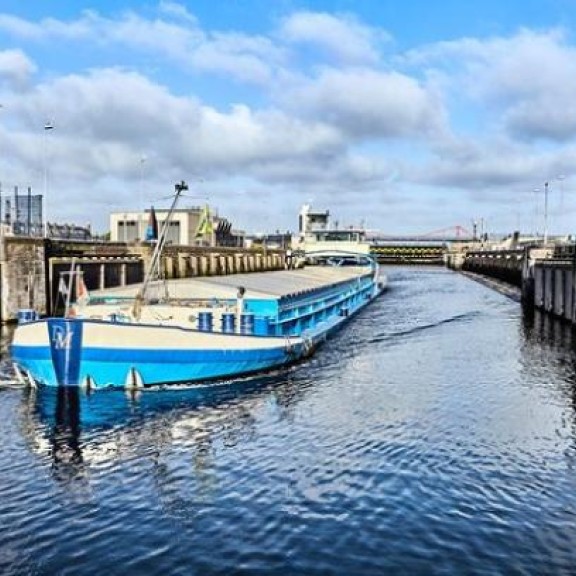
RiverGuide: Current berth occupancy at terminals
From mid-December 2019, commercial vessel operators will have the option to view the current occupancy of berths located in the Amsterdam ports.
The RiverGuide app, a digital route planner for inland vessels, shows berth occupancy based on anonymised AIS data. If a boat master clicks on a berth, the total size of the berth is displayed in a frame, including the length and width of each moored vessel.
Support in route planning
The berth occupancy displayed in the app assists boat masters in conducting their journey – it enables them to see if there is sufficient space available to proceed to the terminal and moor there or if they need to use a temporary berth. Vehicle landing points, drinking water discharge points and waste collection points are also shown in the app.
By offering the additional feature of berth occupancy details, we attempt to do an even better job supporting commercial vessel operators using the RiverGuide app in carrying out their journey, thereby further optimising the logistics supply chain. RiverGuide currently has approximately 1,500 users.
Pilot project to reduce marine radiotelephone traffic
In addition to the new feature showing current berth occupancy, a pilot project was launched this week designed to reduce marine radiotelephone traffic. The purpose of the pilot project is to provide boat masters with up-to-date traffic information electronically and automatically using push notifications. Port of Amsterdam's intention in launching the project is to boost the safety and efficiency of shipping traffic in areas where irregularities might be occurring and where vessel operators are expected to adjust their movements accordingly.
We will be monitoring the pilot project and collecting feedback in the immediate future. All commercial vessels receive these notifications, but a total of seven boat masters are actively involved in the project, and we will incorporate their findings into the evaluation alongside those of the traffic controllers. If the pilot project proves to be of sufficient added value, we will examine whether we can integrate this new approach into our day-to-day operations.